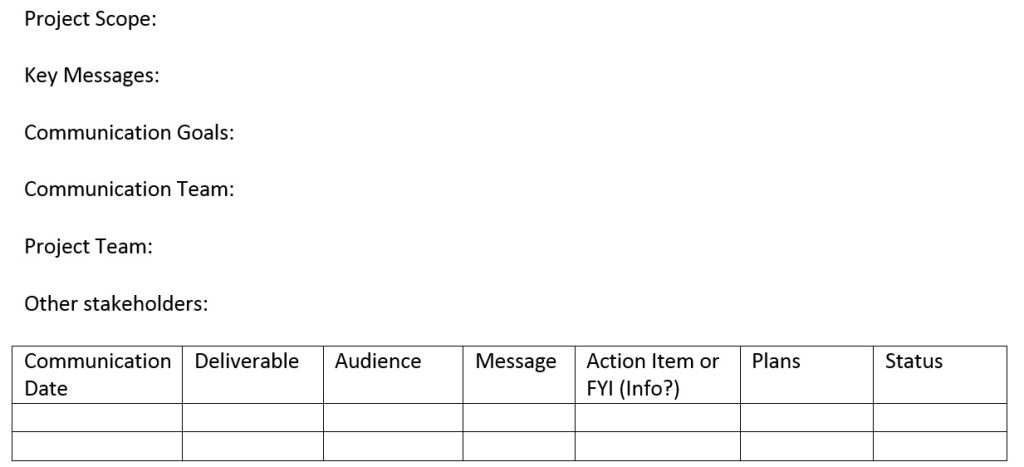31 Tools to Help Stakeholder Management
Tools to Help Stakeholder Management
There are many project decelerators, among them lack of stakeholder support. Whether the stakeholders support your project or not, if they are important to your project, you must secure their support. How do you do that?
First, you must identify who your stakeholders are. Just because they are important in the organization does not necessarily mean they are important to your project. Just because they think they are important does not mean they are. Just because they don’t think they need to be involved does not mean they do not have to be. The typical suspects: your manager, your manager’s manager, your client, your client’s manager, any SME (subject matter expert) whose involvement you need, and the board reviewing and approving your project. Note that in some situations there are people who think they are stakeholders. From your perspective they may not be, but be careful how you handle them. They could be influential with those who have the power to impact your project. Do not dismiss them out of hand.
Second, you need to determine what power they have and what their intentions toward your project are. Do they have the power to have an impact on your project? Do they support or oppose you? What strategies do you follow with them?
Third, what’s the relationship among stakeholders? Can you improve your project’s chances by working with those who support you to improve the views of those who oppose you? Table 5.1 summarizes the options based on an assessment of your stakeholders’ potential for cooperation and potential for threat.
| Low threat potential | High threat potential | |
|---|---|---|
| Low potential for cooperation | Type: Marginal
Strategy: Monitor |
Type: Non-supportive
Strategy: Defend |
| High potential for cooperation | Type: Supportive
Strategy: Involve |
Type: Mixed blessing
Strategy: Collaborative |
Now that you have this information, you can complete a stakeholder analysis template (Table 5.2) that will help you define your strategies to improve their support:
| Stakeholder Names and Roles | How important? (Low – Med – High) | Current level of support? (Low – Med – High) | What do you want from stakeholders? | What is important to stakeholders? | How could stakeholders block your efforts? | What is your strategy for enhancing stakeholder support? |
|---|---|---|---|---|---|---|
Finally, a key piece of your stakeholder management efforts is constant communication to your stakeholders. Using the information developed above, you should develop a communications plan that secures your stakeholders’ support. The template in Figure 5.2 can be used.

References
Solera, J. (2009). Project Decelerators – Lack of Stakeholder Support. Silicon Valley Project Management. Retrieved from https://svprojectmanagement.com/project-decelerators-lack-of-stakeholder-support.
Image descriptions
Figure 5.2 Stakeholder Communication Template
The stakeholder analysis template has six fields plus a table to be filled out. The lines ask for: the project scope, key messages, communication goals, communication teams, project team, and other stakeholders. Then, there is a table with seven columns where you can track the communication plan. The column headers of this table are: communication date, deliverable, audience, message, action item or FYI (info?), plans, and status. [Return to Figure 5.2]
Text Attributions
This chapter was adapted and remixed by Adrienne Watt from the following sources:
- Opening text and text under “Project Stakeholders” adapted from “Project Stakeholders” in Project Management by Merrie Barron and Andrew Barron. Licensed under a CC BY 4.0 licence.
- Text under “Politics of Projects” adapted from “The Politics of Projects” in Project Management by Merrie Barron and Andrew Barron. Licensed under a CC BY 4.0 licence.
- Text under “Culture of Stakeholders” adapted from Culture of Stakeholders in Project Management From Simple to Complex by author(s) whose names have been removed at the request of the original publisher. Licensed under a CC BY-NC-SA 4.0 licence
- Text under “Relationship Building Tips adapted from How to Build Relationships with Stakeholders by Erin Palmer. © CC BY (Attribution).
- Text under “Tools to Help Stakeholder Management” adapted from
Project Decelerators – Lack of Stakeholder Support by Jose Solera. © CC BY (Attribution).

